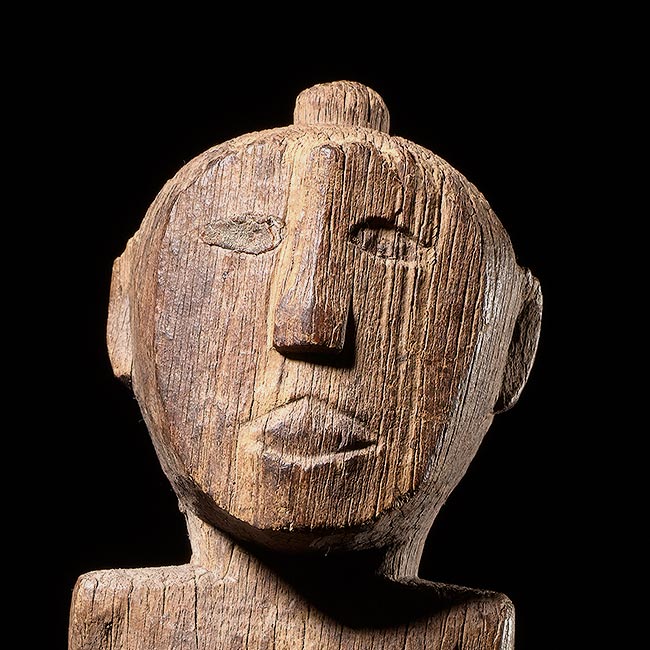Wooden Mask
Vokeo Island, Schouten Islands Group, Papua New Guinea
Early 20th c
Provenance: Grace Goldberg collection, Harrison, NY, acquired in 1970 from Bobbi Nochimson- Entwistle. By descent to family member
This very fine men’s initiation mask known as “lewa” mask, represents a male masked spirit or deity. Its surface is painted with dark paint with traces of light blue pigment found within the cervices surrounding its eyes and the vertical and horizontal ridges. The medial ridge of the forehead gracefully transforms into the large and bulbous, pierced nose. The peoples of the Schouten Islands, an offshore archipelago near the mouth of the Sepik River, create distinctive masks representing spirits called village lewa. Masked performers impersonating those spirits appear to dance and enforce a ban on harvesting coconuts during the lead up to walage, ceremonial food distributions held by the village headman. In preparation for a walage, the headman summons the village lewa. A male dancer impersonating a pregnant female lewa arrives first and “gives birth” to twin sons, who are portrayed by the masked dancers.
Wooden Mask
Vokeo Island, Schouten Islands Group, Papua New Guinea
Early 20th c
Provenance: Grace Goldberg collection, Harrison, NY, acquired in 1970 from Bobbi Nochimson- Entwistle. By descent to family member
This very fine men’s initiation mask known as “lewa” mask, represents a male masked spirit or deity. Its surface is painted with dark paint with traces of light blue pigment found within the cervices surrounding its eyes and the vertical and horizontal ridges. The medial ridge of the forehead gracefully transforms into the large and bulbous, pierced nose. The peoples of the Schouten Islands, an offshore archipelago near the mouth of the Sepik River, create distinctive masks representing spirits called village lewa. Masked performers impersonating those spirits appear to dance and enforce a ban on harvesting coconuts during the lead up to walage, ceremonial food distributions held by the village headman. In preparation for a walage, the headman summons the village lewa. A male dancer impersonating a pregnant female lewa arrives first and “gives birth” to twin sons, who are portrayed by the masked dancers.









